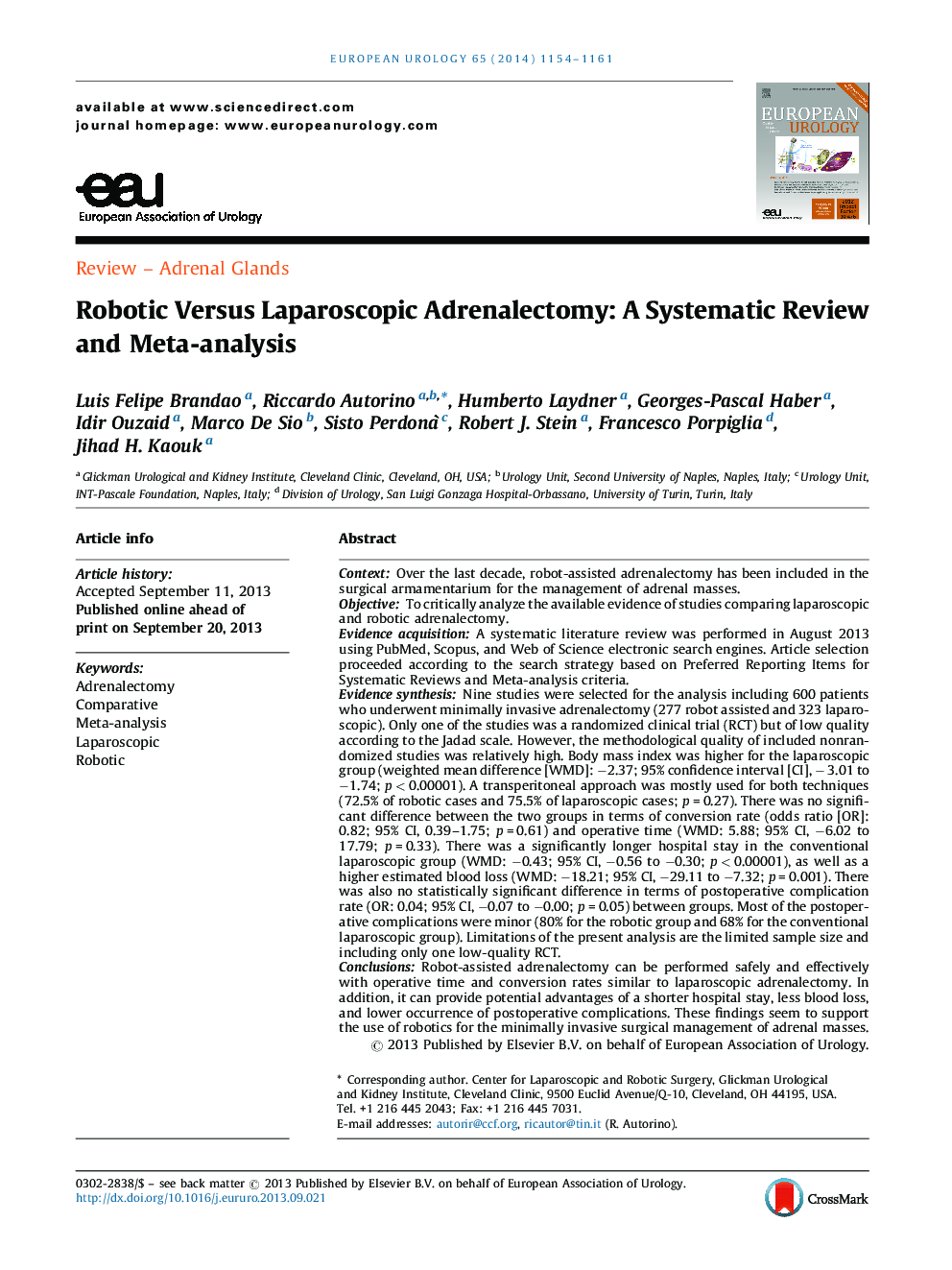| کد مقاله | کد نشریه | سال انتشار | مقاله انگلیسی | نسخه تمام متن |
|---|---|---|---|---|
| 6177765 | 1253111 | 2014 | 8 صفحه PDF | دانلود رایگان |
ContextOver the last decade, robot-assisted adrenalectomy has been included in the surgical armamentarium for the management of adrenal masses.ObjectiveTo critically analyze the available evidence of studies comparing laparoscopic and robotic adrenalectomy.Evidence acquisitionA systematic literature review was performed in August 2013 using PubMed, Scopus, and Web of Science electronic search engines. Article selection proceeded according to the search strategy based on Preferred Reporting Items for Systematic Reviews and Meta-analysis criteria.Evidence synthesisNine studies were selected for the analysis including 600 patients who underwent minimally invasive adrenalectomy (277 robot assisted and 323 laparoscopic). Only one of the studies was a randomized clinical trial (RCT) but of low quality according to the Jadad scale. However, the methodological quality of included nonrandomized studies was relatively high. Body mass index was higher for the laparoscopic group (weighted mean difference [WMD]: â2.37; 95% confidence interval [CI], â 3.01 to â1.74; p < 0.00001). A transperitoneal approach was mostly used for both techniques (72.5% of robotic cases and 75.5% of laparoscopic cases; p = 0.27). There was no significant difference between the two groups in terms of conversion rate (odds ratio [OR]: 0.82; 95% CI, 0.39-1.75; p = 0.61) and operative time (WMD: 5.88; 95% CI, â6.02 to 17.79; p = 0.33). There was a significantly longer hospital stay in the conventional laparoscopic group (WMD: â0.43; 95% CI, â0.56 to â0.30; p < 0.00001), as well as a higher estimated blood loss (WMD: â18.21; 95% CI, â29.11 to â7.32; p = 0.001). There was also no statistically significant difference in terms of postoperative complication rate (OR: 0.04; 95% CI, â0.07 to â0.00; p = 0.05) between groups. Most of the postoperative complications were minor (80% for the robotic group and 68% for the conventional laparoscopic group). Limitations of the present analysis are the limited sample size and including only one low-quality RCT.ConclusionsRobot-assisted adrenalectomy can be performed safely and effectively with operative time and conversion rates similar to laparoscopic adrenalectomy. In addition, it can provide potential advantages of a shorter hospital stay, less blood loss, and lower occurrence of postoperative complications. These findings seem to support the use of robotics for the minimally invasive surgical management of adrenal masses.
Journal: European Urology - Volume 65, Issue 6, June 2014, Pages 1154-1161
